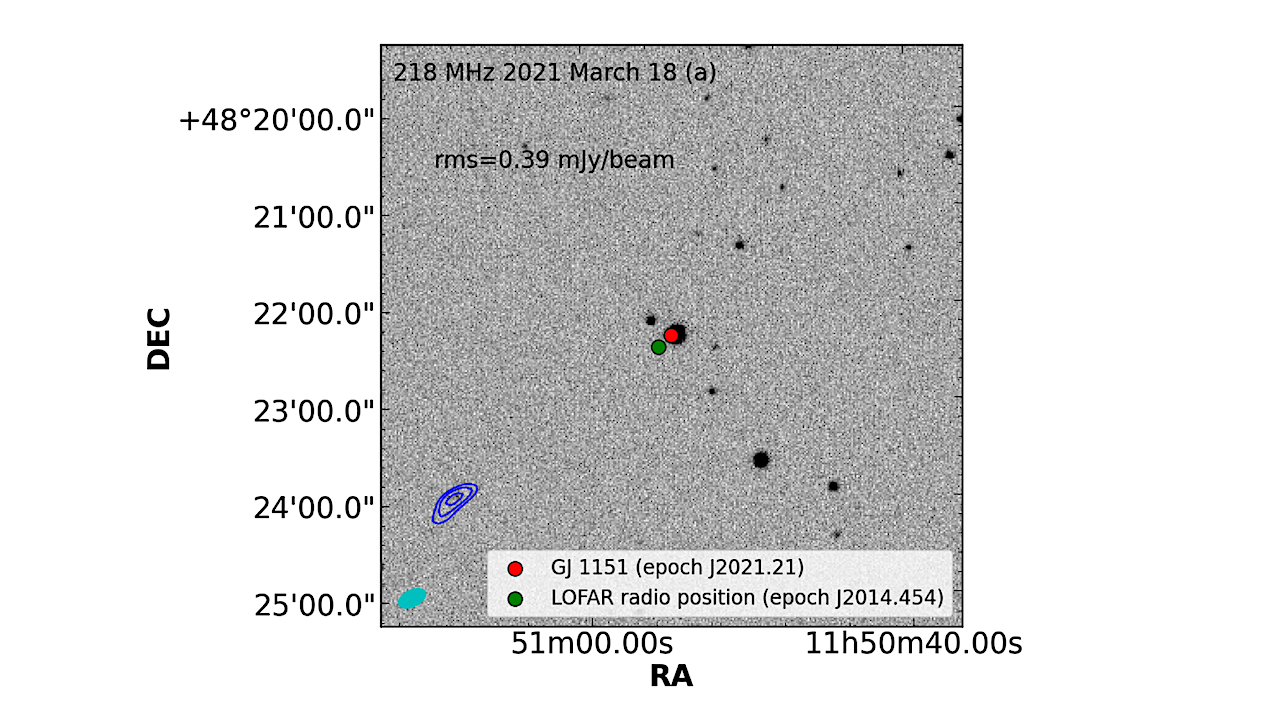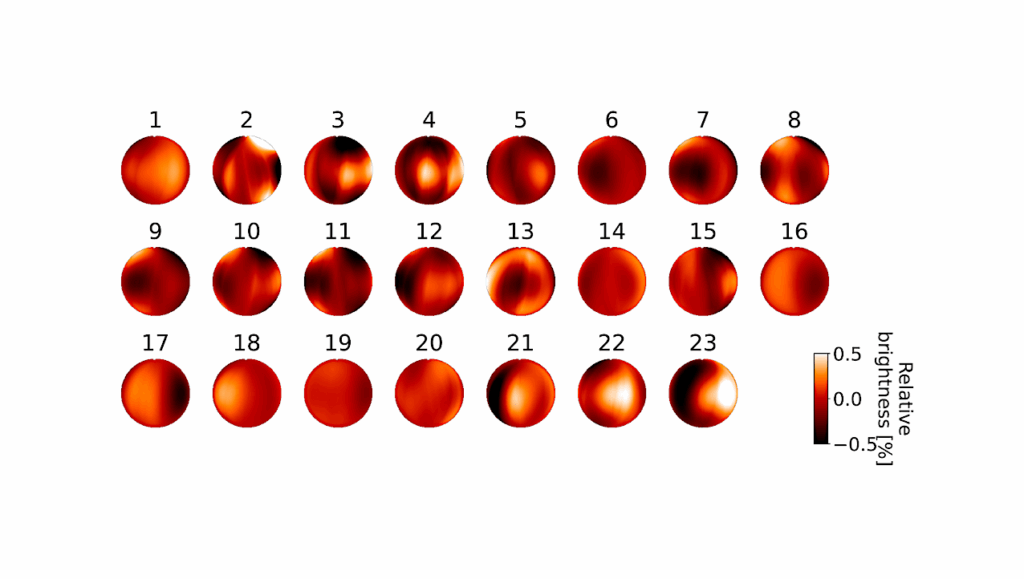uGMRT Survey of EXoplanets Around M-dwarfs (GS-EXAM): Radio observations of GJ 1151

Coherent radio emission with properties similar to planetary auroral signals has been reported from GJ 1151, a quiescent, slow-rotating mid-M star, by the LOFAR Two-metre (120-170 MHz) Sky Survey (LoTSS).
The observed LOFAR emission is fairly bright at 0.89 mJy with 64% circular polarization, and the emission characteristics are consistent with the interaction between an Earth-sized planet with an orbital period of 1-5 days and the magnetic field of the host star. However, no short-period planet has been detected around GJ 1151.
To confirm the reported radio emission caused by the putative planet around GJ 1151 and to investigate the nature of this emission, we carried out uGMRT observations of GJ 1151 at 150, 218, and 400 MHz over 33 hours across ten epochs.
No emission was detected at any frequency. While at 150 MHz and 218 MHz, non-detection could be due to the low sensitivity of our observations, at 400 MHz, the rms sensitivities achieved were sufficient to detect the emission observed with LOFAR at ∼ 20σ level. Our findings suggest that the radio emission is highly time-variable, likely influenced by the star-planet system’s phase and the host star’s magnetic field.
Additional observations below 170 MHz, at more frequent epochs (as the periodicity of the emission is unknown), especially during periods of high stellar magnetic field strength, are needed to confirm the emission.
Mayank Narang, Manoj Puravankara, H. K. Vedantham, C. H. Ishwara Chandra, Ayanabha De, Himanshu Tyagi, Bihan Banerjee, Prasanta K. Nayak, Arun Surya, B. Shridharan, Vinod C. Pathak, Mihir Tripathi
Comments: Accepted at AJ, 8 pages, 2 figures
Subjects: Earth and Planetary Astrophysics (astro-ph.EP); Solar and Stellar Astrophysics (astro-ph.SR)
Cite as: arXiv:2409.18507 [astro-ph.EP] (or arXiv:2409.18507v1 [astro-ph.EP] for this version)
https://doi.org/10.48550/arXiv.2409.18507
Focus to learn more
Submission history
From: Mayank Narang
[v1] Fri, 27 Sep 2024 07:44:22 UTC (5,495 KB)
https://arxiv.org/abs/2409.18507
Astrobiology,








